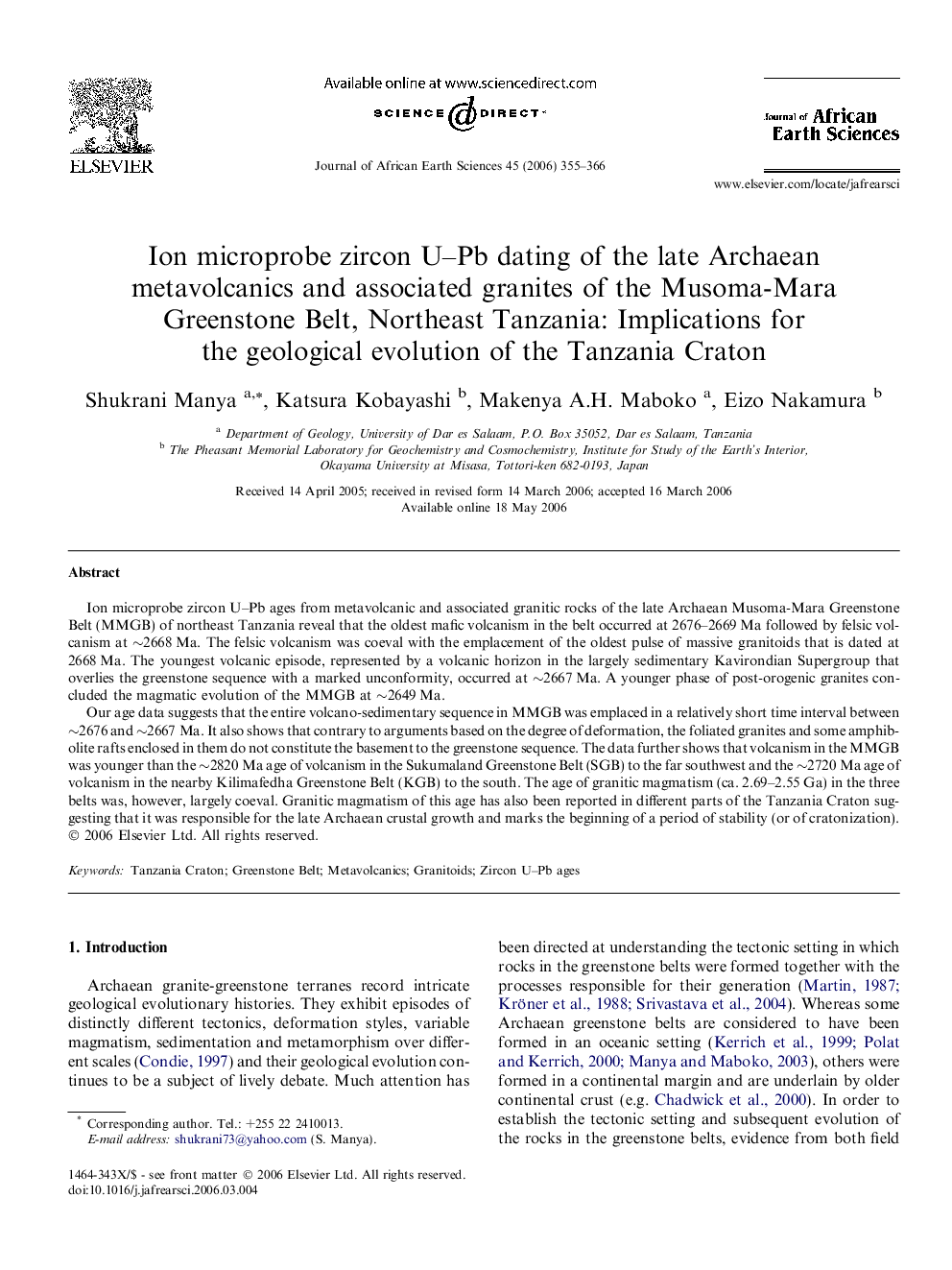| کد مقاله | کد نشریه | سال انتشار | مقاله انگلیسی | نسخه تمام متن |
|---|---|---|---|---|
| 4729846 | 1356579 | 2006 | 12 صفحه PDF | دانلود رایگان |

Ion microprobe zircon U–Pb ages from metavolcanic and associated granitic rocks of the late Archaean Musoma-Mara Greenstone Belt (MMGB) of northeast Tanzania reveal that the oldest mafic volcanism in the belt occurred at 2676–2669 Ma followed by felsic volcanism at ∼2668 Ma. The felsic volcanism was coeval with the emplacement of the oldest pulse of massive granitoids that is dated at 2668 Ma. The youngest volcanic episode, represented by a volcanic horizon in the largely sedimentary Kavirondian Supergroup that overlies the greenstone sequence with a marked unconformity, occurred at ∼2667 Ma. A younger phase of post-orogenic granites concluded the magmatic evolution of the MMGB at ∼2649 Ma.Our age data suggests that the entire volcano-sedimentary sequence in MMGB was emplaced in a relatively short time interval between ∼2676 and ∼2667 Ma. It also shows that contrary to arguments based on the degree of deformation, the foliated granites and some amphibolite rafts enclosed in them do not constitute the basement to the greenstone sequence. The data further shows that volcanism in the MMGB was younger than the ∼2820 Ma age of volcanism in the Sukumaland Greenstone Belt (SGB) to the far southwest and the ∼2720 Ma age of volcanism in the nearby Kilimafedha Greenstone Belt (KGB) to the south. The age of granitic magmatism (ca. 2.69–2.55 Ga) in the three belts was, however, largely coeval. Granitic magmatism of this age has also been reported in different parts of the Tanzania Craton suggesting that it was responsible for the late Archaean crustal growth and marks the beginning of a period of stability (or of cratonization).
Journal: Journal of African Earth Sciences - Volume 45, Issue 3, July 2006, Pages 355–366